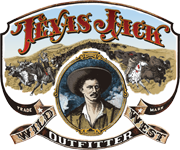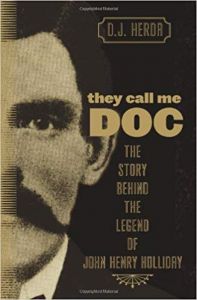Winchester Lever Action Repeating Firearms: The Models of 1886 and 1892 [Paperback]
In the mid-1880s, Winchester discovered that their position as the foremost maker of hunting and sporting long arms was under serious challenge from rivals such as Remington, Ballard and Marlin.
In the mid-1880s, Winchester discovered that their position as the foremost maker of hunting and sporting long arms was under serious challenge from rivals such as Remington, Ballard and Marlin. The problem lay in the fact that the relatively short receiver required by the early lever action system limited the length, and therefore the power of the cartridges that could be used. Big game animals at long distances were beyond the range of many popular Winchester cartridges. To correct this situation and retain their leadership in the marketplace, John Moses Browning of Utah was approached to develop a new design. The result was the long action of the Model 1886 rifle that could accept the long, powerful cartridges of the day, including the U.S. Army's .45-70 cartridge. The M1886 was an instant hit as a big game rifle and was used all over the world
A few years later, Winchester became aware of the demand for a smaller, lighter and more modern rifle for medium to small game. Again, John Browning came through with the M1892, a downsized version of the Model 1886 capable of chambering the smaller but still relatively powerful cartridges like the .25-20 and the .44-40.
Over the years, these two models have become very collectible. But the majority were heavily used by the owners at a time in our nation's history when many, many people depended on hunting to supplement their diets. These rifles have been repaired and updated, sometimes at the Winchester factory but more often by the local gunsmith or even by their owners. The problem for the collector then is in determining what parts of the a particular rifle or carbine are original.
Arthur Pirkle's second volume in the Winchester Lever Action Repeating Rifle series provide the collector, museum curator, arms historian, gunsmith and hunter with a detailed description of each part for both models as well as any changes made to that part during its production life.
Organization is by serial number range. The book also includes a complete description of each model and all markings and other identification features.
An updated and more accurate serial number list is provided. Extensive line drawings and an exploded view of each model illustrate the book. Line drawings are used for clarity.
To reemphasize, This second volume in the Winchester Lever Action Repeating Firearms series describes the Models of 1886 and 1892 on a part-by-part basis with all changes to either rifle listed by serial number range.


![Things You Should Know About Shooting the Black Powder Cartridge Rifle [Paperback]](https://www.texasjacks.com/media/catalog/product/cache/86f807863938cf455607a16adf76f41b/5/1/51hax5fg5kl._sx330_bo1_204_203_200_.jpg)
![L. D. Nimschke: Firearms Engraver [Hardcover]](https://www.texasjacks.com/media/catalog/product/cache/86f807863938cf455607a16adf76f41b/5/1/51esyvjfbol.jpg)
![One Ranger: A Memoir [Paperback]](https://www.texasjacks.com/media/catalog/product/cache/363990ce3848ab96c11ecea119498cea/o/n/oneranger-pb_1.jpg)
![Battle of the Alamo by Ben H. Procter [Paperback]](https://www.texasjacks.com/media/catalog/product/cache/363990ce3848ab96c11ecea119498cea/2/0/2027-battleofthealamo.jpg)
![Tombstone: The Guns & Gear [Paperback]](https://www.texasjacks.com/media/catalog/product/cache/363990ce3848ab96c11ecea119498cea/5/1/51an_gweb0l._sx401_bo1_204_203_200_.jpg)
![Frontier Justice in the Wild West: Bungled, Bizarre, And Fascinating Executions [Paperback]](https://www.texasjacks.com/media/catalog/product/cache/363990ce3848ab96c11ecea119498cea/5/1/51hv_fo31hl.jpg)
![Badasses Of The Old West: True Stories Of Outlaws On The Edge [Paperback]](https://www.texasjacks.com/media/catalog/product/cache/363990ce3848ab96c11ecea119498cea/5/1/5119xzgh36l.jpg)
![The Captured: A True Story Of Abduction By Indians On The Texas Frontier [Paperback]](https://www.texasjacks.com/media/catalog/product/cache/363990ce3848ab96c11ecea119498cea/s/c/screen_shot_2018-07-13_at_2.47.31_pm.png)
![Shooting Buffalo Rifles Of The Old West [Paperback]](https://www.texasjacks.com/media/catalog/product/cache/363990ce3848ab96c11ecea119498cea/5/1/51pbbyemnyl._sx377_bo1_204_203_200_.jpg)

![Life Of Tom Horn: Government Scout & Interpreter [Paperback]](https://www.texasjacks.com/media/catalog/product/cache/363990ce3848ab96c11ecea119498cea/5/1/51upizpclpl.jpg)
![Shot All To Hell: Jesse James, The Northfield Raid, and The Wild West's Greatest Escape [Paperback]](https://www.texasjacks.com/media/catalog/product/cache/363990ce3848ab96c11ecea119498cea/s/c/screen_shot_2021-03-22_at_12.33.39_pm_1.png)
![The Last Stand: Custer, Sitting Bull, and The Battle Of The Little Bighorn [Paperback]](https://www.texasjacks.com/media/catalog/product/cache/363990ce3848ab96c11ecea119498cea/4/1/41cgjd8dmul._sx321_bo1_204_203_200_.jpg)
![Crow Killer: The Saga Of Liver-Eating Johnson [Paperback]](https://www.texasjacks.com/media/catalog/product/cache/363990ce3848ab96c11ecea119498cea/7/1/71zl-dvcool.jpg)
![One Ranger Returns: A Memoir [Paperback]](https://www.texasjacks.com/media/catalog/product/cache/363990ce3848ab96c11ecea119498cea/s/c/screen_shot_2021-03-22_at_12.45.06_pm.png)